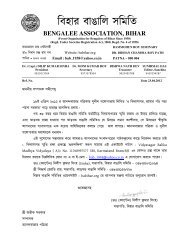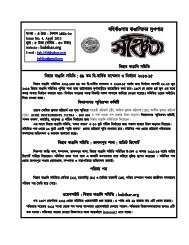Bengali Report - Bengalee Association Bihar
Bengali Report - Bengalee Association Bihar
Bengali Report - Bengalee Association Bihar
You also want an ePaper? Increase the reach of your titles
YUMPU automatically turns print PDFs into web optimized ePapers that Google loves.
the state and the substantial number of refugee population settled in West<br />
Champaran and East Champaran.<br />
According to 2001 census, the size of the <strong>Bengali</strong> population in <strong>Bihar</strong> was 4.43 lakh,<br />
which is estimated to reach the figure of about 5.30 lakh in 2011. It is quite likely<br />
that this is an underestimate of the size of the <strong>Bengali</strong> population in <strong>Bihar</strong>, since the<br />
mother tongue of a large number of them might have been recorded as Hindi,<br />
because of certain deficiencies in census operations. An alternative estimate by<br />
knowledgeable sources puts the present size of <strong>Bengali</strong> population to be close to<br />
12 lakhs. This is indeed a believable figure, since the official records show that the<br />
number of refugee <strong>Bengali</strong>s settled in <strong>Bihar</strong> in the late fifties was close to 3.5 lakh.<br />
By now, this part of the <strong>Bengali</strong> population itself must be accounting for about 7 lakh<br />
<strong>Bengali</strong>s. Outside West Bengal and Tripura, the two states where <strong>Bengali</strong> is the<br />
principal language, the size of the <strong>Bengali</strong> population in <strong>Bihar</strong> is the third highest,<br />
only after Assam and Jharkhand. Unlike the <strong>Bengali</strong> population in some other states<br />
of India where they are found mostly in the urban areas, those residing in <strong>Bihar</strong> are<br />
found both in the rural and urban areas, as mentioned before.<br />
Since about 12 lakh <strong>Bengali</strong>s constitute only a small fraction of the total population<br />
of <strong>Bihar</strong> at 103.8 million, they are considered as a linguistic minority in the state.<br />
Presently, only one out of every 100 <strong>Bihar</strong>is is a <strong>Bengali</strong>-speaking person. As is the<br />
case with minority population anywhere, the <strong>Bengali</strong> population in <strong>Bihar</strong> also suffers<br />
from certain social and economic disadvantages. One obvious disadvantage arises<br />
from the fact that they do not enjoy the opportunity of being educated in their<br />
mother tongue, and this also often translates into cultural disadvantages for the<br />
<strong>Bengali</strong>s. Next, the overall socio-economic status of the <strong>Bengali</strong> population is also<br />
inferior to that of the general population and this has been substantiated by the<br />
results of the present survey. Finally, those refugee <strong>Bengali</strong>s who had settled in<br />
<strong>Bihar</strong> also face certain problems regarding their caste-status. This problem is rather<br />
serious since, to avail the benefits of various state government welfare<br />
2


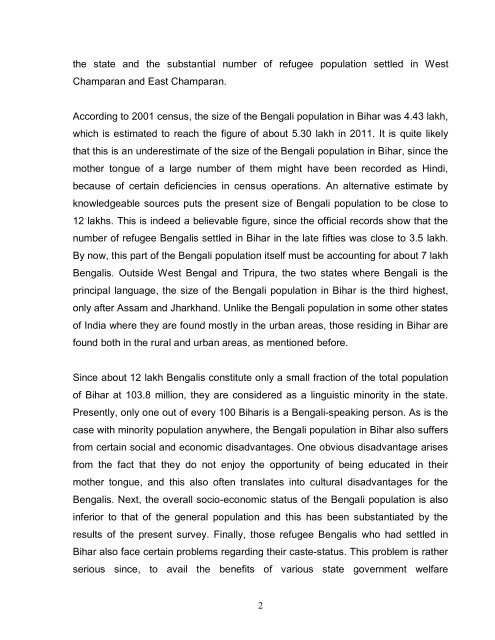

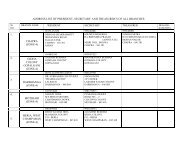
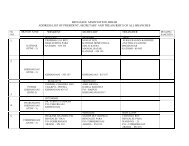
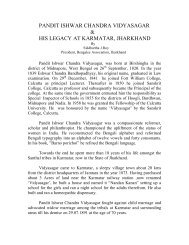
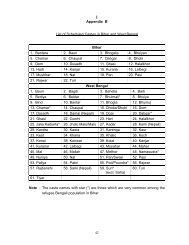
![nandan kanan[1] - Bengalee Association Bihar](https://img.yumpu.com/17028545/1/190x245/nandan-kanan1-bengalee-association-bihar.jpg?quality=85)
